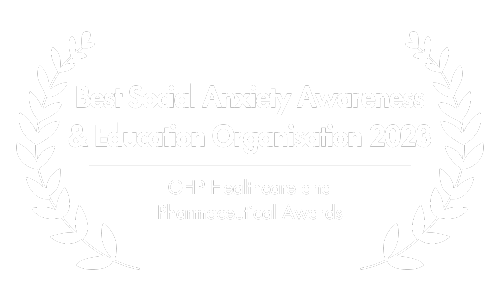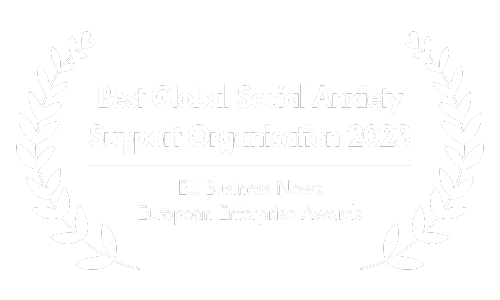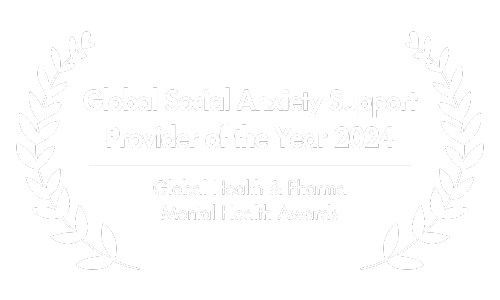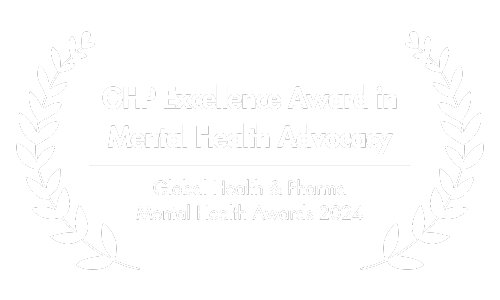Mastering the Mic: Your Blueprint to Overcome Public Speaking Anxiety
This article contains recommendations for a book, an online course, a virtual reality software and an online therapy provider that help with public speaking anxiety. If you purchase product services through this link, you may receive a significant discount and we will receive a commission.
Public speaking is an art, a performance, and for many, a significant source of anxiety.
The mere thought of standing in front of an audience, whether it’s a group of ten or a crowd of a thousand, can evoke feelings of dread, nervousness, and fear.

This phenomenon, known as public speaking anxiety or glossophobia, is more than just “stage fright“. It’s a pervasive concern that affects a substantial portion of the population.
In fact, studies have shown that public speaking anxiety is the single most commonly feared situation, with prevalence rates ranging from 21% to 33% in community samples (Pollard and Henderson, 1988; Stein et al., 1996).
While it’s natural for individuals to feel a certain level of nervousness before addressing an audience, for those with public speaking anxiety, the fear is intensified.

It can hinder career advancement, academic success, and personal growth. But the good news is, with understanding, preparation, and the right resources, this anxiety can be managed and even overcome.
This article delves deep into the world of public speaking anxiety, exploring its causes, impacts, and offering practical solutions to conquer it.
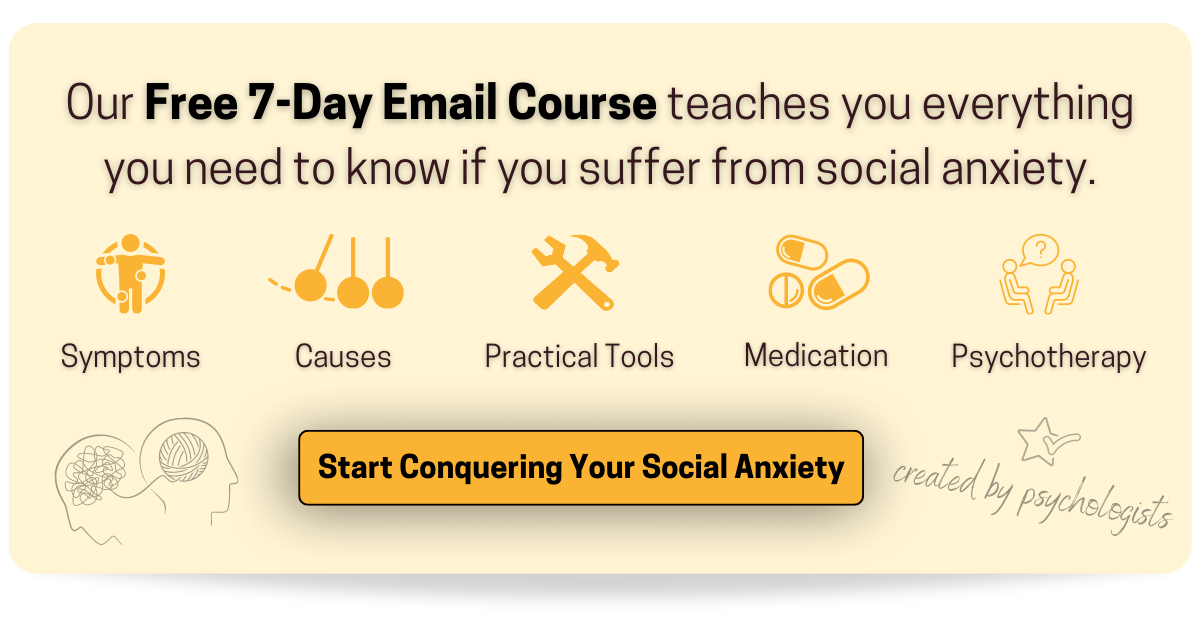
A. Understanding Public Speaking Anxiety
Public speaking anxiety, often termed as glossophobia, is a specific form of social anxiety that arises from the fear of being judged, scrutinized, or making a mistake in front of an audience.
While many people might feel a flutter of nerves before stepping onto a stage or addressing a group, those with public speaking anxiety experience a more intense, often debilitating, fear.
What is it?
At its core, public speaking anxiety is a fear of public performance, where the individual feels they are at the center of attention. This fear isn’t limited to large audiences; it can manifest even in small group settings or one-on-one situations where the individual feels they are “on display”.

More Than Just Nerves
It’s crucial to differentiate between typical nervousness and public speaking anxiety. While most people might feel apprehensive before a presentation, those with public speaking anxiety often experience overwhelming dread, sometimes weeks or months in advance.
This intense fear can lead to avoidance behaviors, where individuals might decline opportunities or find excuses to evade public speaking situations.
A Common Challenge
You’re not alone if you feel this way. Studies have shown that public speaking anxiety is one of the most commonly feared situations, with prevalence rates suggesting that about a third of the general population experiences this fear to some degree (Pollard and Henderson, 1988; Stein et al., 1996).
In fact, public speaking anxiety is the most commonly reported fear in the general population, including the fear of death (Dwyer & Davidson, 2012).
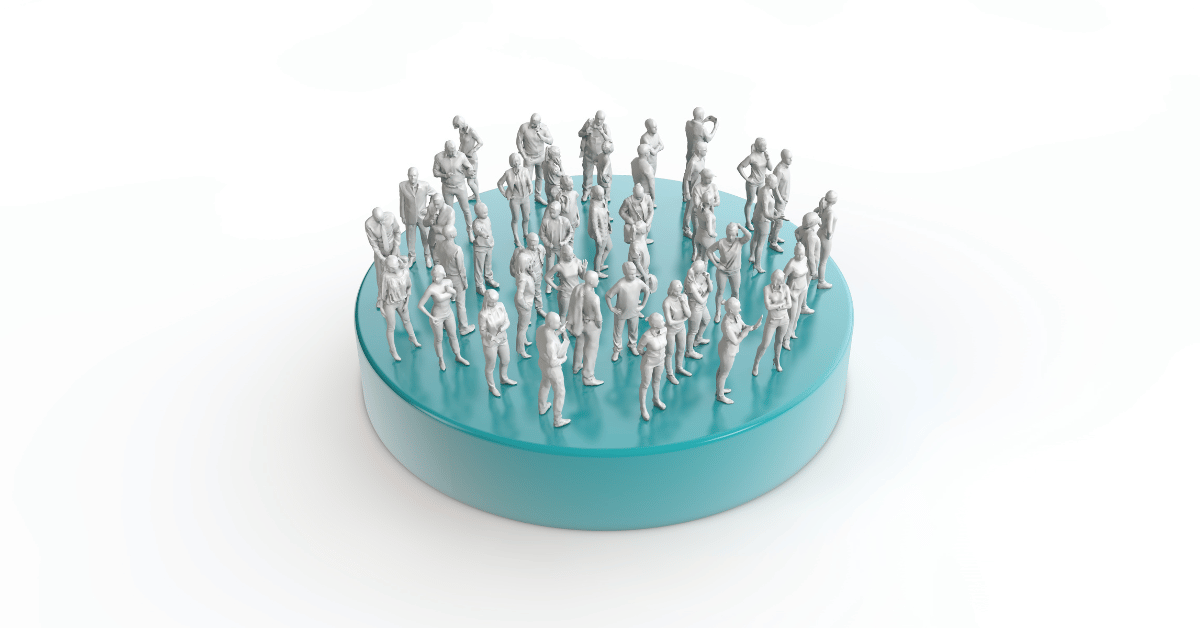
Not Just About Speaking
While the fear centers around speaking, it’s often tied to deeper concerns. Worries about being negatively judged, making a mistake, forgetting one’s lines, or being the center of attention are all underlying fears that can fuel public speaking anxiety.
Recognizing and understanding public speaking anxiety is the first step towards addressing it.
With knowledge and the right strategies, it’s a challenge that can be overcome, allowing individuals to communicate confidently in any setting (Ebrahimi et al., 2022).
B. Physical and Mental Impact of Public Speaking Anxiety
Public speaking anxiety doesn’t just manifest as a fleeting feeling of nervousness. It can have profound physical and mental effects on an individual.
Recognizing these impacts can help in understanding the depth of this anxiety and the need for effective coping strategies.

Physical Impacts
- Increased Heart Rate: One of the most immediate physical reactions to anxiety is an increased heart rate. This is part of the body’s natural “fight or flight” response to perceived threats.
- Trembling or Shaking: Some individuals might experience noticeable shaking of their hands or trembling in their voice when faced with the prospect of public speaking.
- Dry Mouth: Anxiety can lead to reduced saliva production, resulting in a dry mouth, which can make speaking continuously challenging.
- Sweating: Excessive sweating, especially on the palms, forehead, or underarms, is another common physical symptom of public speaking anxiety.
- Stomach Disturbances: Feelings of nausea or even stomach cramps can occur in anxious situations.
- Shortness of Breath: Some individuals might experience difficulty in breathing or feel like they can’t get enough air, especially just before they start speaking.

Mental Impacts
- Reduced Concentration: Anxiety can scatter one’s thoughts, making it challenging to focus on the content of the speech or the audience’s reactions.
- Negative Self-talk: Individuals with public speaking anxiety often engage in negative self-talk, doubting their abilities, and expecting the worst possible outcomes.
- Avoidance Behavior: Due to the fear of public speaking, some might go to great lengths to avoid situations where they might be required to speak, limiting their personal and professional opportunities.
- Reduced Self-esteem: Repeatedly avoiding public speaking or having negative experiences can erode an individual’s self-confidence and self-worth over time.
- Sleep Disturbances: The anticipation of a public speaking event can lead to sleepless nights, further exacerbating feelings of fatigue and anxiety.

Understanding these physical and mental impacts underscores the importance of addressing public speaking anxiety.
It’s not just about improving one’s speaking skills but also about enhancing overall well-being and quality of life.
C. Causes of Public Speaking Anxiety
Understanding the root causes of public speaking anxiety can be instrumental in addressing and managing it.
While the exact cause can vary from person to person, several common factors contribute to this fear (Ebrahimi et al., 2022):

Past Negative Experiences
One of the most common triggers for public speaking anxiety is a past negative experience. This could be a presentation that didn’t go well, being laughed at during a speech, or any other embarrassing situation in front of an audience.
Such experiences can leave a lasting impact, making individuals apprehensive about future speaking opportunities.
Fear of Judgment
The fear of being judged or scrutinized by others is a significant factor. This isn’t just about the content of the speech but extends to personal attributes, including appearance, voice, and mannerisms.

Lack of Preparation
Feeling unprepared or unsure about the content can exacerbate public speaking anxiety. The fear of forgetting one’s lines or not being able to answer questions can be daunting.
High-Stakes Situations
When the outcome of the presentation has significant implications, such as a major business deal or a final grade in a course, the pressure can intensify the anxiety.
Physical Factors
Some individuals might have physical symptoms or conditions that they fear will be noticeable when speaking, such as a shaky voice, trembling hands, or sweating. The anxiety of these symptoms being seen can, in turn, amplify the fear of public speaking.

Personality Traits
Introverted or naturally shy individuals might find public speaking more challenging than their extroverted counterparts. Such personality traits can make the idea of being the center of attention more intimidating.
Cultural or Societal Factors
In some cultures, public speaking or being the center of attention might not be as common or encouraged, making individuals from such backgrounds potentially more susceptible to public speaking anxiety.
Evolutionary Perspective
From an evolutionary standpoint, being scrutinized or singled out in a group setting was perceived as a threat. This ancient instinct to avoid potential threats might play a role in modern-day public speaking anxiety.

Recognizing the cause or causes of one’s public speaking anxiety is a pivotal step in addressing it.
By pinpointing the root of the fear, individuals can tailor their coping strategies more effectively and work towards overcoming this challenge.
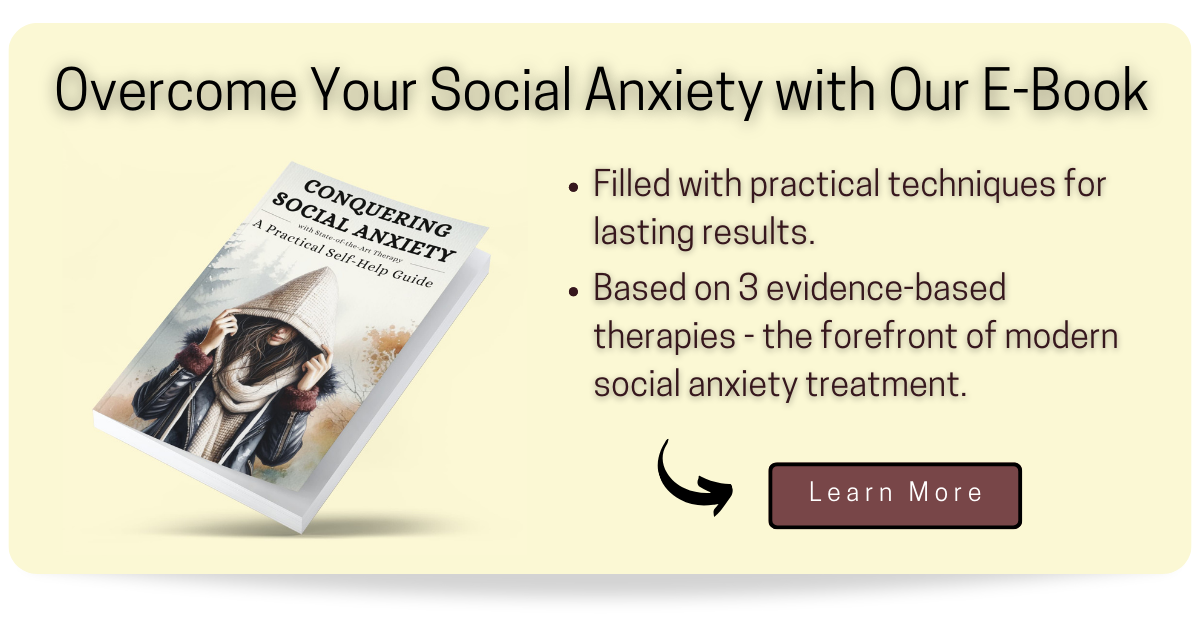
D. Practical Strategies to Overcome Public Speaking Anxiety
Overcoming public speaking anxiety requires a combination of mental preparation, practice, and sometimes, external support.
Here are some practical strategies that can help individuals manage their fears and become more confident speakers:
Preparation is Key
The more prepared you are, the more confident you’ll feel. This includes understanding your topic thoroughly, anticipating potential questions, and practicing your delivery multiple times.
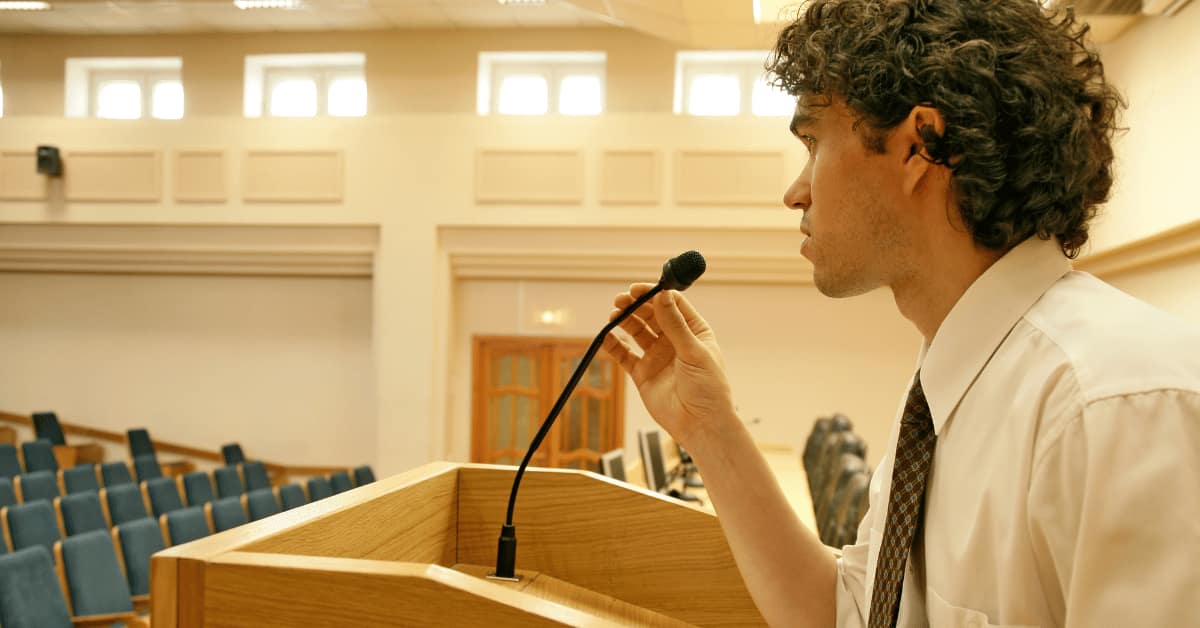
Visualization
Before the actual presentation, visualize yourself succeeding. Picture yourself speaking with confidence, engaging with your audience, and handling any unexpected situations with ease.
Deep Breathing
Engage in deep breathing exercises before and during your speech. This can help calm your nerves, reduce anxiety, and improve concentration. You can click here to read our article on how to practice deep breathing.
Positive Self-talk
Challenge and replace negative thoughts with positive affirmations. Instead of thinking, “I’m going to mess up,” tell yourself, “I am prepared, and I can handle this.” Make sure to choose statements that are realistic and make sense to you.

Engage with Your Audience
Instead of focusing on yourself, focus on the message you’re delivering and its importance to your audience. Engaging with them can also help divert attention from your anxiety.
Practice in a Safe Environment
Before the actual presentation, practice in front of friends, family, or colleagues who can provide constructive feedback.
Grounding Techniques
If you feel overwhelmed, use grounding techniques like the “5-4-3-2-1” method, where you identify five things you can see, four you can touch, three you can hear, two you can smell, and one you can taste.

Limit Caffeine and Sugar
Both can make you jittery and amplify feelings of anxiety. Opt for water or herbal tea before your presentation.
Acceptance
Many people try to suppress or modify their anxiety, which can often exacerbate it. It’s okay to be nervous. Accepting that you’re feeling anxious, rather than fighting it, can sometimes reduce the intensity of the anxiety.
Seek Feedback
After your presentation, seek feedback. Understanding areas of improvement can help you feel more prepared and less anxious in the future.
Join a Speaking Club
Organizations like Toastmasters offer a supportive environment to practice public speaking and receive constructive feedback.

Remember, it’s natural to feel nervous before speaking in public. However, with the right strategies and support, you can manage your anxiety and even come to enjoy the experience of sharing your knowledge and insights with others.
E. Further Help and Resources
For many, the journey to overcome public speaking anxiety is ongoing. While the practical strategies mentioned above can be immensely helpful, some individuals may benefit from additional resources and structured support. Here are some recommendations:

Online-Therapy
In many cases, the pervasive anxiety associated with public speaking can be attributed to an underlying struggle with social anxiety disorder. In this case, professionally administered therapy is the most promising course of action.
In partnership with Online-Therapy, we’re pleased to recommend a comprehensive therapy package tailored to your needs. This includes:
- One live session per week (choose from video, voice, or text)
- Unlimited messaging with your therapist
- An 8-section CBT program featuring 25 worksheets
- Daily worksheet feedback
- Additional resources like yoga and meditation videos, a journal, activity plan, and self-assessment tests

The platform allows you to easily switch therapists to find the right fit, all within a secure and confidential environment.
To get started, register for ‘individual therapy‘ and select ‘social anxiety‘ as your focus. You can then provide more details about your specific situation with public speaking anxiety.
Their plans start at just $40 per week. You can use the following link to sign up, which will grant you a 20% discount for your first month of therapy.

Book Recommendation
“Public speaking without fear: How to overcome anxiety and present with confidence” by Clare Cairns: This book, penned by an award-winning drama school director, offers secret tips and theatrical knowledge on how to create and deliver an exceptional presentation.
Cairns introduces the Pressure System, a set of techniques that combines knowledge from the performing arts, psychology, communication, and meditation to make public speaking easier and more enjoyable. You can find the book here.

Online Course Recommendation
“The Complete Guide to Conquering the Fear of Public Speaking”: This course is meticulously designed to tackle the root causes of public speaking anxiety and equip learners with actionable strategies to overcome it. Here’s how the course aids in combating the fear:
- Understanding Anxiety: The course begins by delving into the psychology behind public speaking anxiety, helping participants recognize and understand their personal triggers.
- Grounding Techniques: Participants are introduced to a series of grounding exercises that help calm the mind and body. These techniques are invaluable for moments when anxiety threatens to take over.
- Breathing and Vocal Exercises: Proper breath control can significantly reduce anxiety and improve speech delivery. The course offers exercises to enhance diaphragmatic breathing and vocal projection.
- Positive Visualization: Emphasizing the power of the mind, the course guides learners through visualization techniques, enabling them to envision success and build confidence.
- Presentation Strategies: Beyond mental preparation, the course provides practical tips on structuring speeches, using visual aids effectively, and engaging the audience, ensuring that participants are well-equipped to handle various speaking scenarios.
- Feedback and Peer Review: Engaging in peer reviews allows participants to receive constructive feedback and also observe others, learning from their strengths and areas of improvement.
- Real-world Practice Scenarios: The course offers opportunities to practice in simulated environments, gradually building confidence and reducing the fear of unfamiliar settings.

By combining psychological insights with practical exercises, this course offers a holistic approach to transforming public speaking anxiety into confidence, ensuring that participants are not only mentally but also practically prepared to face any speaking challenge.
Virtual Reality Software Recommendation
VirtualSpeech is a leading platform that harnesses the power of Virtual Reality (VR) to address public speaking anxiety. Here’s how it can be a game-changer for those looking to conquer their fear of public speaking:
- Realistic Practice Scenarios: VirtualSpeech offers a range of exercises tailored for public speaking, from delivering presentations in diverse settings to impromptu speech training. These scenarios simulate real-life speaking environments, allowing users to practice in a realistic yet safe setting.
- Immediate Feedback: The platform stands out for its real-time feedback capabilities. As you practice, it evaluates aspects like eye contact, volume, and use of filler words, enabling instant improvements.
- Skill Building: Regular practice in these virtual scenarios can significantly boost your public speaking skills and confidence, preparing you for real-world situations.
- Accessibility: While the ideal experience is with a VR headset, VirtualSpeech is also accessible directly through your web browser, ensuring everyone can benefit.
- Supplement to Traditional Therapy: VirtualSpeech complements traditional exposure therapy methods for social anxiety, offering a modern approach to overcoming public speaking fears.

Research has shown that Virtual Reality can be effective in reducing public speaking anxiety (Kroczek & Mühlberger, 2023). By immersing yourself in VirtualSpeech‘s scenarios, you engage in fear extinction and habituation, aligning with the core principles of exposure therapy.
To delve deeper into VirtualSpeech and its offerings, you can click below. If you’re considering an immersive VR experience, the Meta Quest is currently the most cost-effective compatible option. You can find the Meta Quest here.
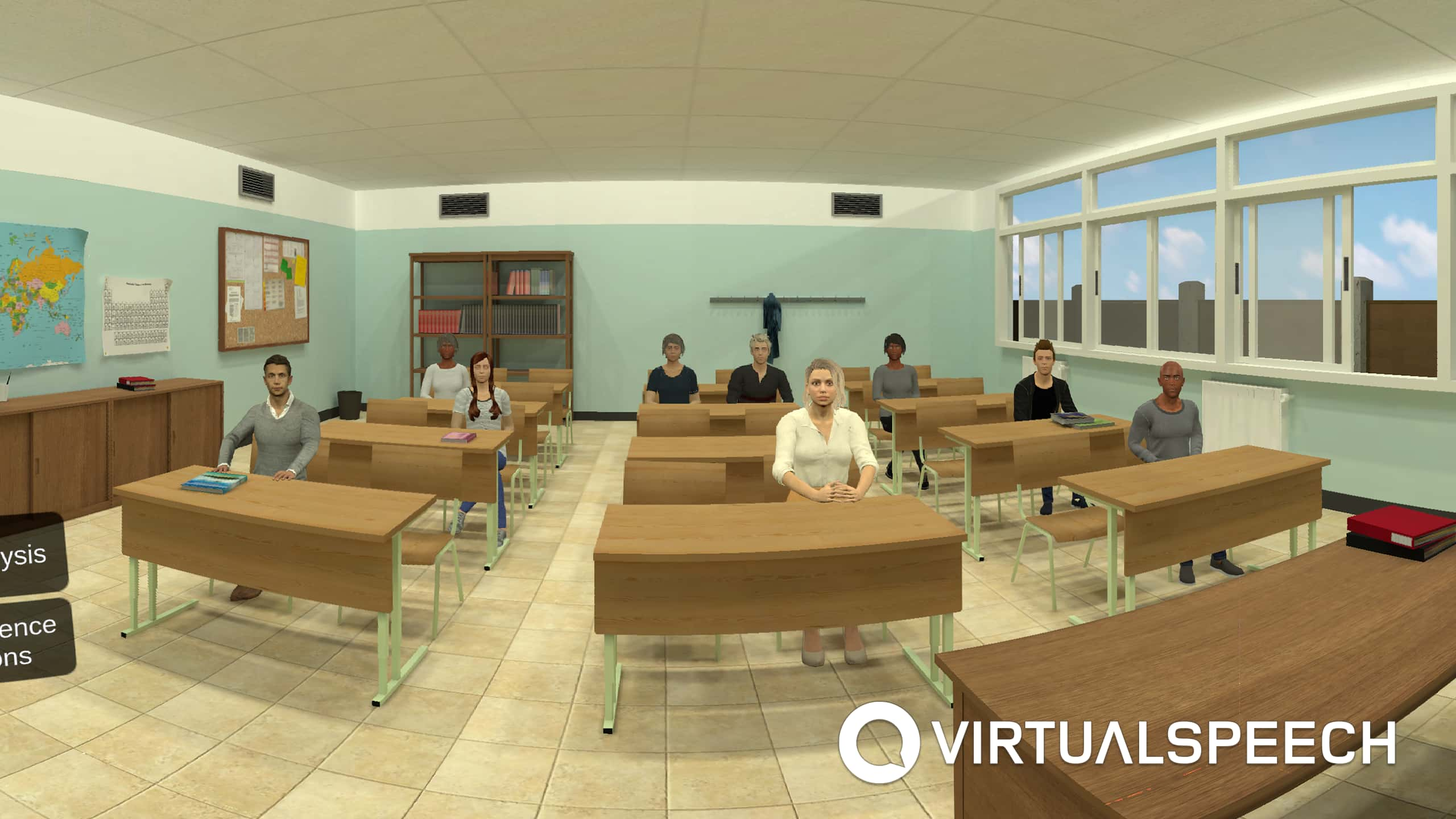
Remember, the journey to overcome public speaking anxiety is personal. What works for one person might not work for another.
It’s essential to find the resources and strategies that resonate with you and your unique experiences. With the right support and tools, you can become a confident and effective public speaker.
F. Conclusion
Public speaking anxiety, a prevalent concern for many, can manifest in various ways, both mentally and physically.
As we’ve explored throughout this article, its roots can be traced back to evolutionary, societal, and personal factors. Yet, with understanding and the right strategies, it’s a challenge that can be overcome.
The journey to confident public speaking is unique for everyone. For some, it may involve deep introspection to understand the root causes of their anxiety.

For others, it might be about learning practical techniques to manage their physical symptoms or reframe their negative thoughts. And for many, it’s a combination of both.
Public speaking anxiety, at its core, often stems from a deep-seated fear of being judged or negatively evaluated by others.
This apprehension isn’t just about the act of speaking in public; it’s intricately tied to how we perceive ourselves in the eyes of our audience and our internal narratives about self-worth and competence.
Practical strategies, such as deep breathing, visualization, and grounding techniques, can offer immediate relief during anxiety-inducing situations.
However, beyond these tactical approaches, it’s crucial to nurture a mindset of growth and resilience.

If you are looking to delve deeper into the topic, we have several related articles that provide comprehensive insights:
- Causes of Social Anxiety: Explore the underlying factors that contribute to the development of social anxiety, from genetics to environmental influences – by clicking here.
- Types of Social Anxiety: Understand the different forms and subtypes of social anxiety, offering a more nuanced view of the condition – by clicking here.
- Diagnosis of Social Anxiety: Learn about the diagnostic criteria and the process healthcare professionals use to identify and assess social anxiety – by clicking here.
- Social Anxiety Test: If you’re curious about the severity of your social anxiety, consider taking an official test to gain insights into your experiences – by clicking here.
- Introductory Guide to Social Anxiety: For a holistic overview of the condition, our in-depth guide serves as a foundational resource for understanding social anxiety’s complexities – simply click here to read it.
If you’re already familiar with the above basics of social anxiety, you might as well skip ahead to our full treatment guide. It gives you a very thorough overview of exactly what you can do to overcome your difficulties. You can read it by clicking here.
Still have lingering questions? Take a step toward clarity and empowerment by enrolling in our Free 7-day Email Course. We’re dedicated to being your guide on this journey of understanding and growth.

Dwyer K. K., Davidson M. M. (2012). Is public speaking really more feared than death? Communication Research Reports, 29(2), 99–107. 10.1080/08824096.2012.667772
Ebrahimi, O. V., Pallesen, S., Kenter, R. M. F., & Nordgreen, T. (2019). Psychological Interventions for the Fear of Public Speaking: A Meta-Analysis. Frontiers in psychology, 10, 488. https://doi.org/10.3389/fpsyg.2019.00488
Kroczek, L. O. H., & Mühlberger, A. (2023). Public speaking training in front of a supportive audience in Virtual Reality improves performance in real-life. Scientific reports, 13(1), 13968. https://doi.org/10.1038/s41598-023-41155-9
Pollard, C. A., & Henderson, J. G. (1988). Four types of social phobia in a community sample. The Journal of nervous and mental disease, 176(7), 440–445. https://doi.org/10.1097/00005053-198807000-00006
Stein, M. B., Walker, J. R., & Forde, D. R. (1996). Public-speaking fears in a community sample. Prevalence, impact on functioning, and diagnostic classification. Archives of general psychiatry, 53(2), 169–174. https://doi.org/10.1001/archpsyc.1996.01830020087010
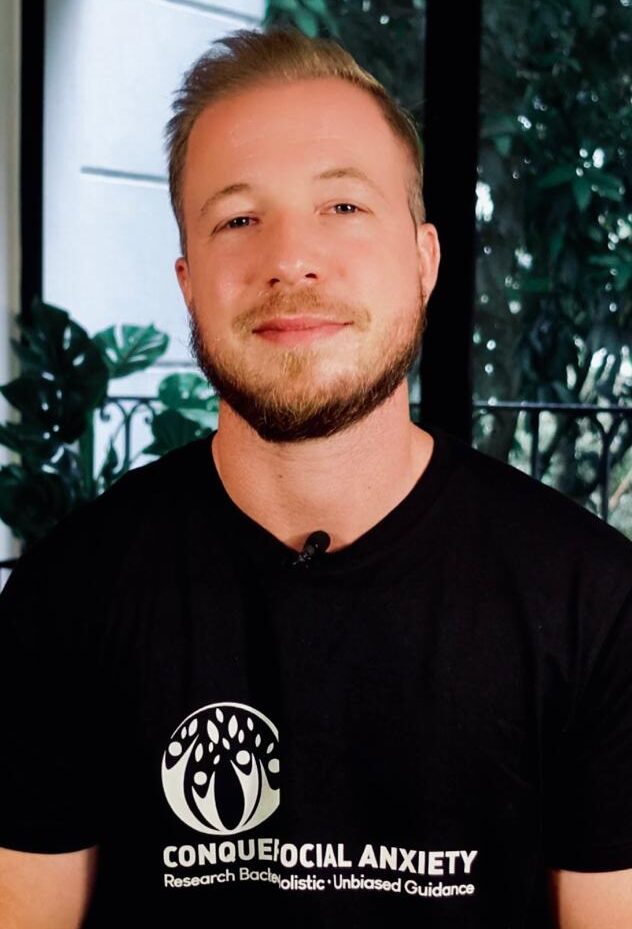
About the Author: Martin Stork
Martin is a professional psychologist with a background in physical therapy. He has organized and led various support groups for people with social anxiety in Washington, DC and Buenos Aires, Argentina. He is the founder of Conquer Social Anxiety Ltd, where he operates as a writer, therapist and director. You can click here to find out more about Martin.






